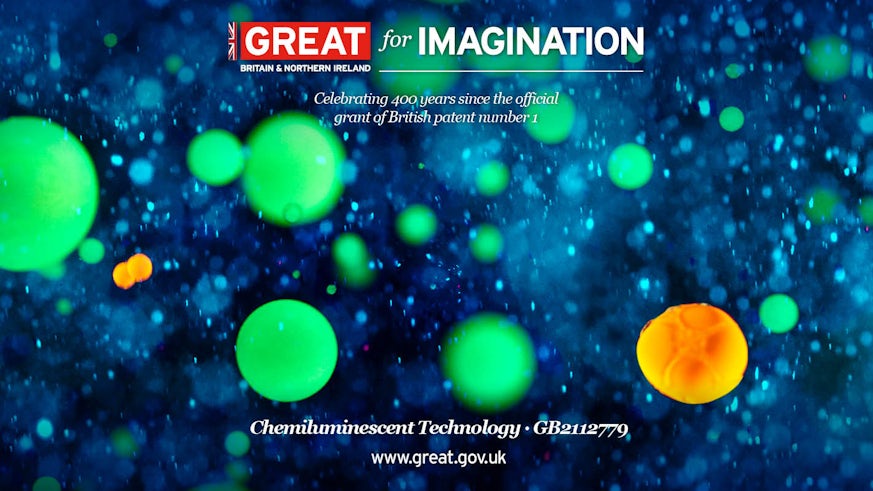Illuminating research
26 March 2018

A Cardiff University patent, which pioneered a new generation of biochemical tests for disease diagnosis, is included in a list of sixty standout patents, as the UK celebrates the 400th anniversary of British patent number one.
Patent number GB2112779 describes an invention by Professor Anthony Campbell, Professor Stuart Woodhead and Professor Ian Weeks based on their research in the Welsh National School of Medicine (now Cardiff University School of Medicine) into the replacement of radioactive isotopes by light-emitting (chemiluminescent) substances for use in medical diagnostic tests.
The research underpinning the Patent combined Professor Campbell’s knowledge from his extensive studies of the mechanisms of light emission by living creatures (bioluminescence), Professor Woodhead’s expertise in key biochemical test methods (immunoassay) used in medical diagnosis and Professor Week’s expertise in physical-organic chemistry in the design and synthesis of novel chemical compounds.
This work formed the basis of the development of the new test method described in the Patent that was more sensitive, rapid and accurate than existing methods used at that time for the diagnosis of disease. Such existing tests were also affected by instability and were restricted to use in specialist laboratories that required licences and specialist facilities for the handling of radioisotopes thus limiting their wider application.
The new test method was superior in many respects permitting many more different disease biomarker molecules to be reliably measured, for example in patient blood samples, and enabled many more diseases to be rapidly diagnosed. The work involved the help of many colleagues including Malcolm Ryall who constructed research instruments for detecting low levels of emitted light.
The School of Medicine subsequently filed an application for the Patent celebrated here which describes the design, synthesis and use of novel chemiluminescent acridinium esters as non-radioactive “labels” for biological molecules. Though the use of chemiluminescent labels had been proposed some years earlier, the present invention demonstrated reliable test performance superior to that achieved by radioactive labels. This fact generated much industry interest and in order to commercialise the invention the University granted licences to diagnostics companies for the use of the technology and Professors Woodhead and Weeks formed a spinout company (Molecular Light Technology Ltd. (MLT)) to enable further development and exploitation of the technology. MLT was purchased by one of the licencee companies (Gen Probe Inc.) for $11million and Gen Probe subsequently acquired by Hologic Inc. for $3.8 billion.
The successors in business of the original patent licensees manufacture and market products that are used worldwide in many hundreds of millions of clinical diagnostic tests annually, impacting on the health of billions of patients globally since their introduction. These include diagnostic tests for cancer, infections, diabetes and many other illnesses, as well as blood bank tests that screen donated blood for pathogens such as HIV and hepatitis.
The invention and its subsequent use have achieved many accolades including a Queen’s Anniversary Prize (1998), the US National Medal of Technology (2004) and a citation as “…one of the top 100 life changing discoveries…” arising from UK universities (Universities UK, 2006).
Find out more about the University's vision for innovation-led growth in Wales
Find out more about the Innovation Partnership.
